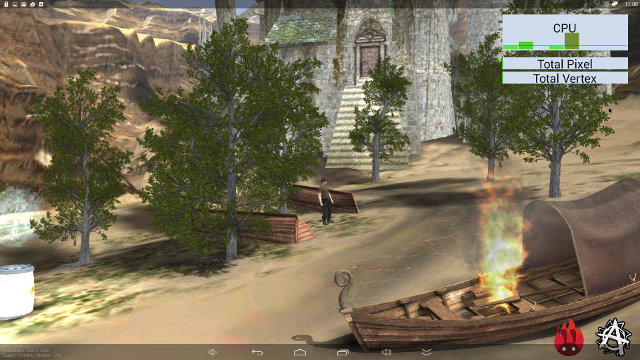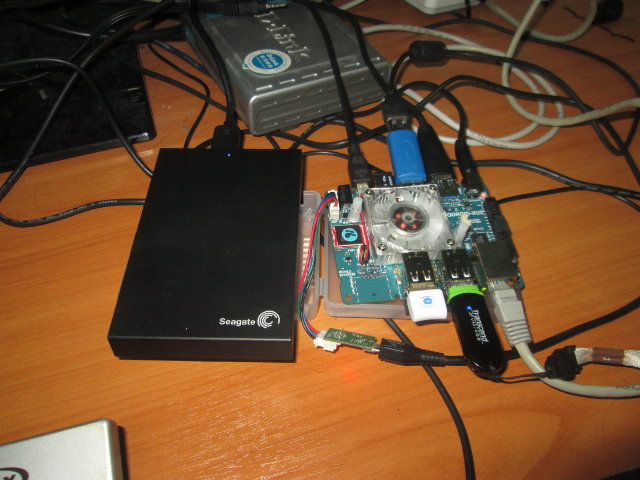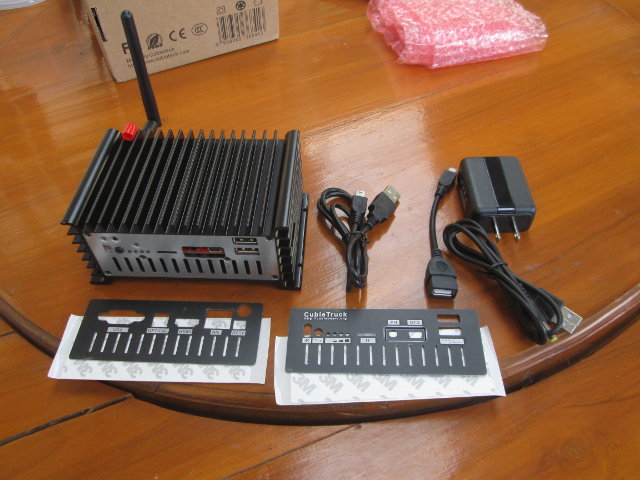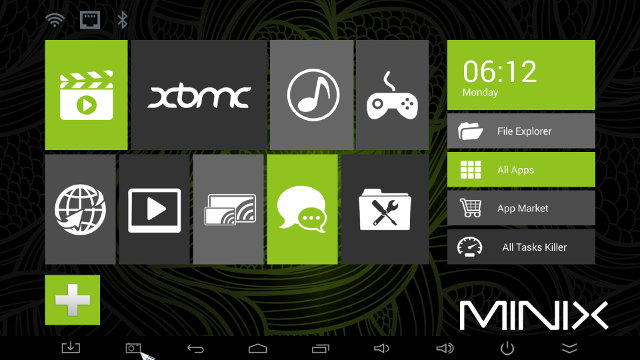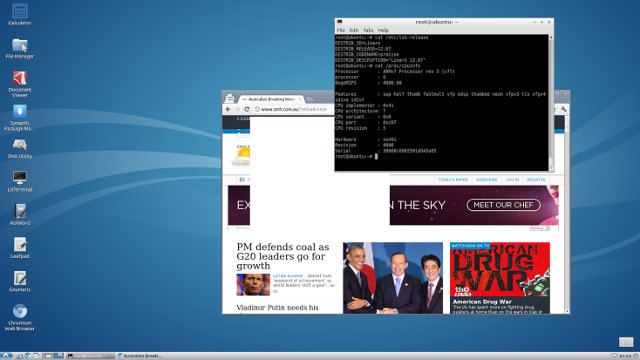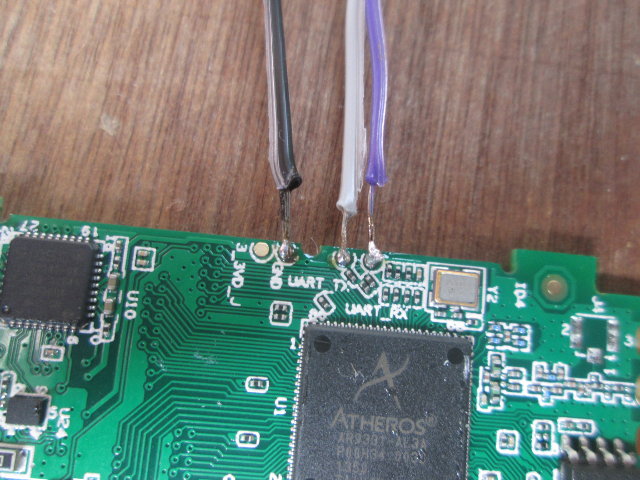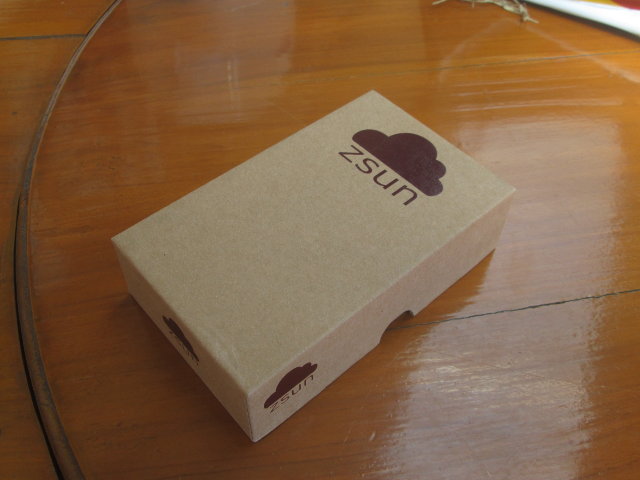Allwinner A80 is one of the few octa core processors featuring ARM’s big.LITTLE technology currently available on the market. The processor comes with four ARM Cortex A15 (big) cores, and four ARM Cortex A7 (LITTLE) core, and tasks will be scheduled to different processor depending on the load to optimize power consumption on mobile devices. However, earlier big.LITTLE processors like Samsung Exynos 5410 has some serious limitations, as they only supported “cluster migration” meaning you could only use the Cortex A7 cluster or Cortex A15 cluster at any given time, so Exynos 5410 could only make use of four cores at most due to hardware limitations. They also used to be two software implementations: In-kernel Switching (IKS) and Global Task Scheduling (GTS). The former could only handle one type of core at the same, and the latter, which I believe is now used in all new devices, can handle any […]
ODROID-XU3 Lite Development Board – Android Setup and Benchmarks
It’s been nearly ten days since I make ODROID-XU3 Lite unboxing, and my plans to first test Linux on the board were thwarted due a problem with HDMI. Luckily, after several attempts I managed to boot the board with Android. So today, I’ll show how to install or update Android on the board, and run a few benchmarks. But since there’s always a silver lining, I’ll start buy writing a bit about the HDMI issue, as I learned a few things on the way. HDMI Output Tribulations ODROID-XU3 Lite looks like a nice and powerful kit, and it may be one of the most cost effective ARM board on the market since it comes to performance to price ratio, so I was excited to try it, but as you know if you’ve read my unboxing post I did not work quite as planned, as all I got was a black […]
CubieTruck Metal Case Unboxing and Disassembly
CubieTruck Metal Case is a kit comprised of CubieTruck (aka CubieBoard 3), a 128GB SSD, a 5,300 mAh battery, a power adapter, and various cables. In case you are not familiar with CubieTruck, it’s a development board by CubieTech, based on Allwinner A20 dual core ARM Cortex A7 processor with 2GB RAM, 8GB NAND flash, a SATA connector, HDMI & VGA outputs, Gigabit Ethernet, 2 USB host ports, and a mini USB OTG port. CubieTech decided to sent me a kit, as it was featured on CNX Software, and today, I’ll show what’s exactly is inside the kit since the product description is not 100% clear. I’ve been told it’s pre-installed with Lubuntu, so in a separate post next week, I’ll try Linux, report on the SSD performance, and check the battery UPS function, and possibly life on a charge. CubieTruck Metal Case Unboxing I’ve received the kit in a […]
MINIX NEO X6 Media Hub Review
Last week-end, I took a few pictures of MINIX NEO X6 media hub, and had a look at the company’s firmware and forum support which indeed seems to be good. Today, I’ve completed the full review of MINIX NEO X6, and I will compare it to two of its lower priced competitors: MXQ S85 and EM6Q-MXQ. First Boot, Settings and First Impressions The IR remote control works fine, including continuous up ad down pressing, but I switched to using Mele F10 Deluxe air mouse for convenience. I’ve connected an Ethernet cable, an HDMI cable, a micro SD card, a USB hard drive, and a USB hub with two RF dongles for my air mouse and gamepad, a USB flash drive, and a UVC webcam. I’ve connected the power, pressed the power button on the side of the box, but nothing happened at first… You have to press the button one […]
Unboxing of Eny M8S H.265 / 4K Android Media Player Powered by Amlogic S812 Processor
M8S and M8C Android TV boxes are updates of M8 / TM8 box, replacing Amlogic S802 quad core processor with Amlogic S812 processor which has about the same feature except it bring HEVC/H.265 hardware video decoding. M8S comes with 2GB RAM, whereas M8C features only 1GB RAM. Eny Technology decided to send me M8S for review. As usual, I’ll start with some pictures of the package, box, and board, and will do the full review in the next few days. M8S Unboxing Pictures The company send me the parcel via DHL which I promptly received with the product in the package below marked “4K OTT TV BOX” and a predominant “HEVC”. The back of the package list the main specifications: quad core processor, octo core Mali 450 GPU, Android Kitkat. and so on. There’s also a sticker showing the MAC address, which starts with C4:4E:AC for those interested. The box […]
How-to Install Ubuntu on Allwinner A80 Powered pcDuino8 and A80 OptimusBoard
Last month, pcDuino released Android 4.4 and Ubuntu images for pcDuino8 board powered by Allwinner A80 octa core processor, and since it’s the same board layout as A80 OptimusBoard, I decided to try it out, but it failed as the update script would try to flash it to a partition that’s too small for the root file systems. But last week, Ian Morrison and Minidodes gave it another try, and successfully booted Ubuntu, or more exactly Lubuntu, on A80 OptimusBoard. Both their screenshot reports sun9i platform in /proc/cpuinfo, so that’s definitely Allwinner A80, but only one core is shown. I’m not sure if it’s because the other are idled and don’t show, or for some reasons, the kernel only supports one core at this stage. Anyway, here’s how they did to install Lubuntu: Flash the kernel (pcduino8_kernel_livesuit_20141008.img) with PhoenixCard or Livesuit first. See instructions to use Livesuit with A80 OptimusBoard. […]
Zsun SD111 Is Now “Officially” an Hackable Wireless Flash Drive
Zsun SD11x are Wi-Fi flash drives for 8 to 128 GB eMMC, alternative to Sandisk or Kingston. Yesterday, I soldered the UART pins to Zsun SD111 (8GB) flash drive to access the serial console, but I did not manage to enter the terminal as it was password-protected. I posted my results anyway, as I was convinced I would get some clever ideas from my readers, some of which appeared to be a little time consuming, but Zoobab offered a simple solution that consisted in changing the boot parameters, by replacing /sbin/init by /bin/sh. The first step is to interrupt the boot by pressing space or another key, in order to access U-boot. Now we can check the U-boot environment ar7240> printenv bootargs=console=ttyS0,115200 root=31:02 rootfstype=jffs2 rw init=/sbin/init mtdparts=ar7240-nor0:64k(u-boot),64k(u-boot-env),6720k(rootfs),1216k(uImage),64k(NVRAM),64k(ART) bootcmd=bootm 0x9f6B0000 bootdelay=4 baudrate=115200 ethaddr=0x00:0xaa:0xbb:0xcc:0xdd:0xee ipaddr=10.168.168.1 serverip=10.168.168.10 stdin=serial stdout=serial stderr=serial ethact=eth0 Environment size: 361/65532 bytes Let’s keep everything the same, except the init, […]
Zsun SD111 Wireless USB Flash Drive Review
Zsun SD111, SD112 and SD113 are Wi-Fi / USB flash drives with respectively 8GB, 16 GB and 32GB storage. GearBest sent me the 8GB version (SD111) for review, as it could be an interesting platform to hack. I’ve take picture of the device, take it apart to check the board, review quickly the standard features with Android and Ubuntu, and try to access the board from the network. Zsun SD111 Unboxing I received the device in the following package. The flash drive comes with a micro USB to USB cable for charging and accessing the device from a computer, and a user’s manual in Chinese. You’ll probably prefer using a soft copy user manual in English… Zsun SD111 Board and Battery To open the stick, insert a sharp and thin object in the hole for the neck strap, and push upwards to lift the top cover a little, and finish […]


